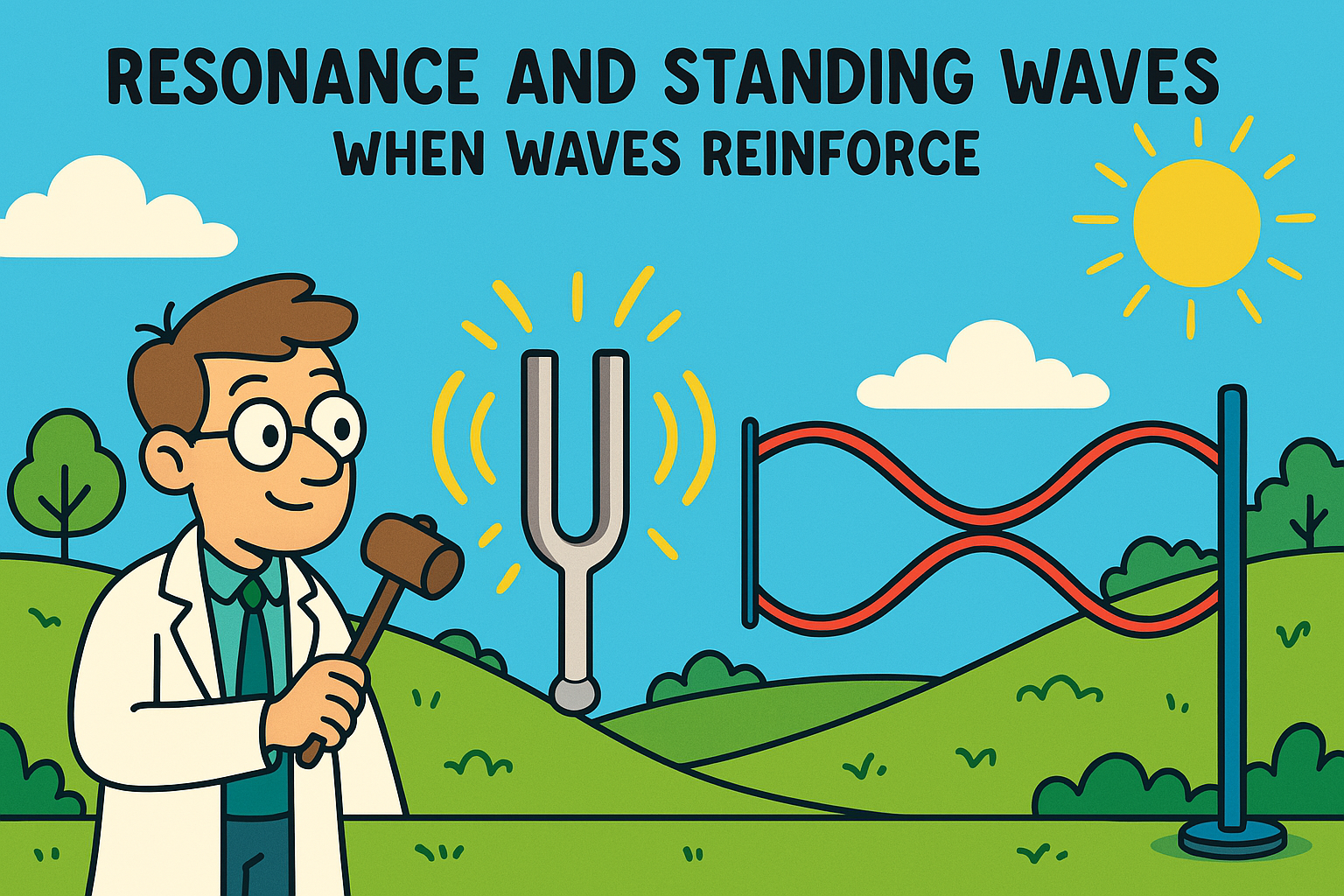Resonance and Standing Waves: When Waves Reinforce
Resonance and Standing Waves: When Waves Reinforce
Have you ever seen a guitar string vibrating in slow motion? Or maybe you’ve tapped the rim of a glass and heard it sing? These are examples of something called resonance and standing waves. They’re not just cool to watch—they help explain why musical instruments sound the way they do and why bridges can wobble (or even collapse!) if the wind hits just right.
In this lesson, we’ll dive into how wave reinforcement happens and what it means when a wave matches the natural frequency of an object. You’ll discover how standing waves form on ropes, strings, and even inside tubes. We’ll also look at how this affects sound, engineering, and even your own voice. So, if you’ve ever wondered why certain notes “ring out” or why swings go higher when you pump at the right time—get ready. It’s all about patterns, timing, and the physics of vibration.
This topic is part of our Info Zone collection. You can read the full topic, once logged in, here: Resonance and Standing Waves: When Waves Reinforce
You’ll also find a full Lesson Plan and a handy Parent Q & A sheet, for this topic, ready to use..
Members Only
You need to be registered and logged in to access this learning resource and other member only content. It only costs £1.99

